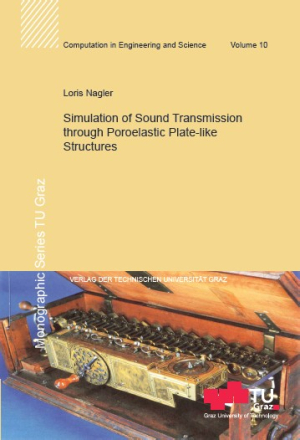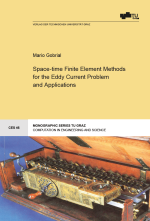The experimental determination of the sound-absorbing properties of
poroelastic panels or room-separating walls is known to be both
expensive and time-consuming. That is why it seems beneficial to replace
such experiments by adequate computer simulations. Since such panels or
walls usually feature a plate-like geometry, a two-dimensional model is
preferred over a three-dimensional one. The goal of this step is to
increase the efficiency of the computation due to the eliminated need of
discretizing the structure over its thickness. The development of a
two-dimensional formulation relies on a proper integration over the
thickness. In contrast to classical plate theories in which this
integration is enabled by the introduction of some kinematical
assumptions, the approach chosen in this work consists in replacing all
quantities by power series in thickness direction and truncating them
according to the needed level of accuracy. In this way, the requirement
of formulating a priori assumptions regarding the systems response in
thickness direction is bypassed. This method is shown to adequately
aproximate the much costlier three-dimensional model. Also, the coupling
of the two-dimensional model with a surrounding fluid is developed and
results are presented.
Issue: Open Access E-Book
ISBN: 978-3-85125-250-7
Language: Englisch
Release date: December 2012
Series: Monographic Series TU Graz / Computation in Engineering and Science, Issue Vol. 10
The experimental determination of the sound-absorbing properties of
poroelastic panels or room-separating walls is known to be both
expensive and time-consuming. That is why it seems beneficial to replace
such experiments by adequate computer simulations. Since such panels or
walls usually feature a plate-like geometry, a two-dimensional model is
preferred over a three-dimensional one. The goal of this step is to
increase the efficiency of the computation due to the eliminated need of
discretizing the structure over its thickness. The development of a
two-dimensional formulation relies on a proper integration over the
thickness. In contrast to classical plate theories in which this
integration is enabled by the introduction of some kinematical
assumptions, the approach chosen in this work consists in replacing all
quantities by power series in thickness direction and truncating them
according to the needed level of accuracy. In this way, the requirement
of formulating a priori assumptions regarding the systems response in
thickness direction is bypassed. This method is shown to adequately
aproximate the much costlier three-dimensional model. Also, the coupling
of the two-dimensional model with a surrounding fluid is developed and
results are presented.





